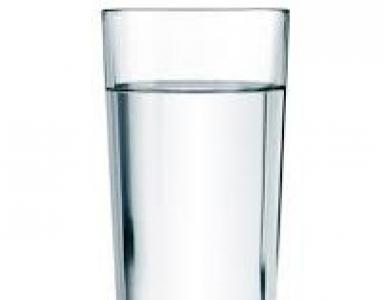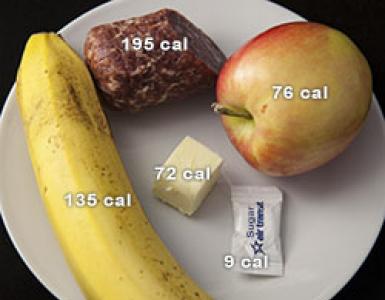Methods of swimming on the back. Swimming on the back: equipment and types
How did samurai, Georgian soldiers, Russian sailors and Indians stay on the water?
Suyey-jutsu
Japan, as is known, is an island country, the ability to swim there was valued at all times. But swimming is different. Swimming in medieval Japan was not a whim, but an indispensable condition for survival. Samurais from childhood were trained in a special art called suyey-jutsu. His specifics were determined by the combat tasks that were put before the soldiers.
First, it was necessary to be able to overcome water barriers in ammunition. Secondly, often it was required not only to swim, but also to shoot at the same time from the bow. This skill was considered the top of Japanese warriors skill. Thirdly, there were cases when it was necessary to carry a banner above the water. Finally, it was necessary to be able to swim with bound hands and feet.
Training Suyey-jutsu consisted of mastering basic techniques: fumi-asi (walking in water), inatobi (jumping out of water), asi-garami (fight in water).
Interesting was the training suyey-jutsu. Checking the skill level was calligraphy on the water. That is, the swimmer simultaneously sailed and wrote hieroglyphs on the board. If the ink, plaque and pen were dry - the "course of a young samurai swimmer" was considered passed.
Similar skills were taught to the Japanese ninja. Only they were taught to swim still and noiselessly. Accustomed to carry out assignments of a special kind, it was vital for them to remain unnoticed.
Suyey-jutsu is now practically forgotten in Japan itself, not to mention the rest of the world, although the masters of this technique try to keep the tradition, resenting that modern Japanese youth prefer western sports to suyey-jutsu.
Colchis-Iberian style
Honestly, do you know a lot about the Colchian-Iberian style of swimming? For most people, it is unknown, although it contains even several varieties (Kulhuri, Lazuli, Iberiuli, Abhaguzi, Tahvia, Khashuruli and others). The main difference of the Colchis-Iberian style is that the swimmer does not use limbs in it and swims with the help of dolphin movements of the body. At the same time hands are pressed to the body, and the legs are tightly closed.
This style of swimming would sink to oblivion, if not for Henry Kuprashvili - doctor of science, military, professor, journalist, president of the Federation of National Sailing of Georgia.
In August 2002 he crossed the Dardanelles Strait (12 km) with bound hands and feet for 3 hours and 15 minutes. Henry Otarovich teaches this style of the younger generation. According to him, the Georgian style of swimming, in the first place, brings up character, will and fearlessness. And with this you can not argue, because once learning to swim in a delphin was a mandatory course of training of Georgian soldiers.
Tredzhen
The history of the appearance today of the generally accepted Olympic crib was not easy. Even in the XIX century, Europeans preferred a breaststroke. Something similar to the crawl brought to the Old World in 1873 by John Arthur Tredzhen. He returned from his journey through South America, where he studied the swimming styles of local Indians for a long time. In fact, tredzhen (as they called this style afterwards) was a combination of a rabbit and a brass. Sweeping movements of the hands - from the rabbit, movement of the feet in the horizontal plane - from the brass. 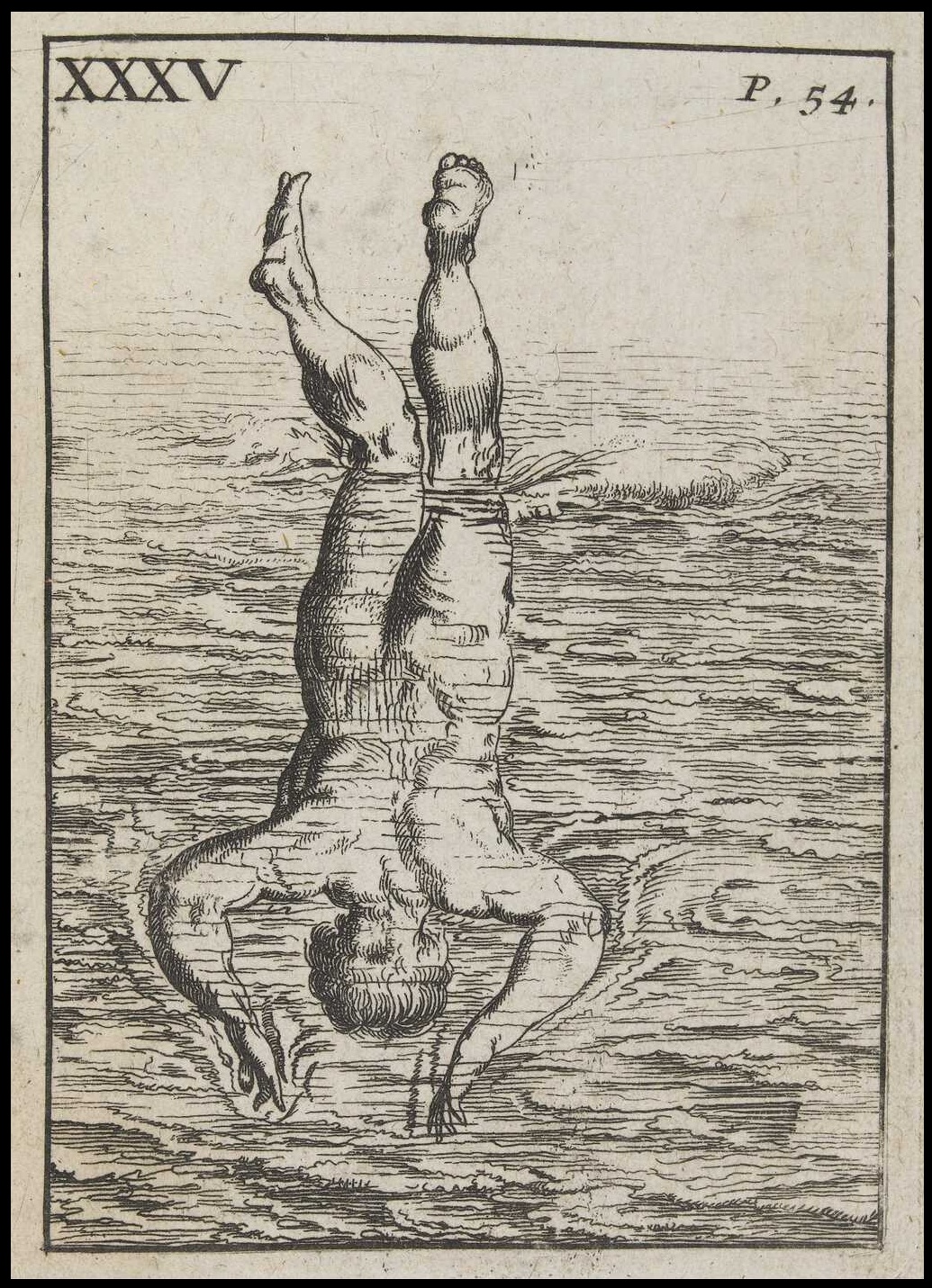
The new style, despite its effectiveness, did not immediately take root in Europe. People were embarrassed by the "ignoble" spray from the movements of the swimmer. But the speed of the style-style forced the athletes to close their eyes to the men, and this style remained in use until 1912, when the Canadian George Hodgson won them the Olympic Games.
Later, the trend was replaced by the usual styles, the longest it lasted, oddly enough, in the USSR.
Over-Arm
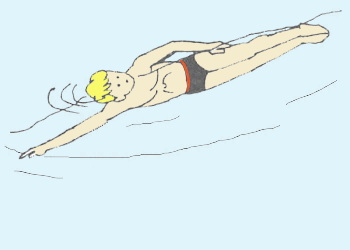
The style of swimming over-arm (with the English "through the hand") is a sailing on the side. It is generally accepted that in colonial England this style was inherited from the Indians. During the swim with the over-arm, the swimmer draws underwater under the "bottom" hand, and "top" after the stroke in the water pulls out of it back and carries through the air forward to perform the next stroke. The legs work in the same way as during breastfeeding. 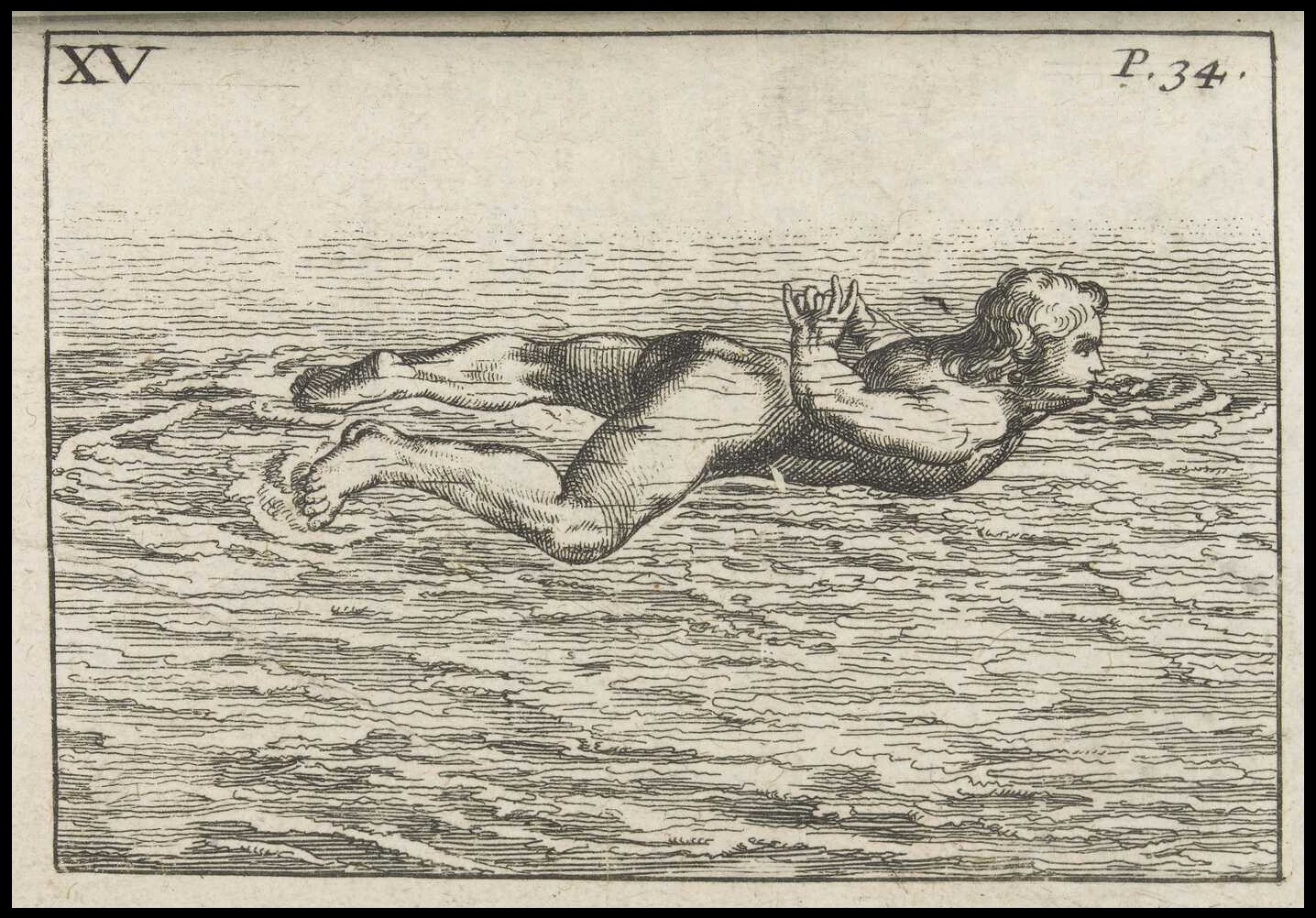
In Russia, what was dubbed the over-arm in England, was known before recognition by the international swimming public. This must have influenced the fact that in our country this style of navigation lasted longer than in other countries. In sailing on the side regularly (from 1914 to 1952), the championships of the country were played and USSR records were recorded for men in swimming for 100 and 300 m, for women - for 100 and 200 m.
Over-Arm still use rescuers, but as an independent sports discipline, this style was lost.
Overarm

In ancient Greece, a close-minded person was told: "He can neither read nor swim." In Russia, the ability to swim was valued no less. In the Ipatiev Chronicle, for example, there is a story about the boy who crossed the Dnieper in order to inform Prince Svyatoslav of the invasion of Pechenegs to Kiev.
In the XVIII century, the most outstanding swimmers officially received the title of "excellent", as, for example, Lieutenant Fleet Kontsov, who sailed in 1770 about 28 km in 12 hours.
What style did he do? It must be the style of the little girl. Today you can meet the definition of snezhens as one of the names of the rabbit, but technically this is not true. Krol appeared only at the end of the XIX century. The name "sabies" can be explained by the fact that the swimmer spread his arms diagonally, which corresponded to the length of the "oblique sazhen".
Sleds are an old Russian freestyle. He is faster than a brass who came to Russia only at the end of the XVIII - beginning of the XIX century, but today even this very name is not known to anyone.
This article will give theoretical guidance that will help you learn the correct technique of swimming with a crawl on your back. After a careful study of the technique, one can begin to practice.
At the initial stages of training, the hands are still stretched out behind the head and hold the plank. The legs make the same movements as. Namely, almost straight legs move "up and down", the movement comes from the hip, but the hips do not have to wiggle from side to side.

To work out the movements with your feet, you can use the edge of the pool, which you can grasp with your hands. So a person will be sure that he will not drown.
In addition, there are auxiliary exercises that can be done on land. They consist in the imitation of "water" movements. Sitting on the floor and leaning back with his hands, you need to alternately raise your straightened legs by 30 centimeters. When one leg goes down, the other goes up.
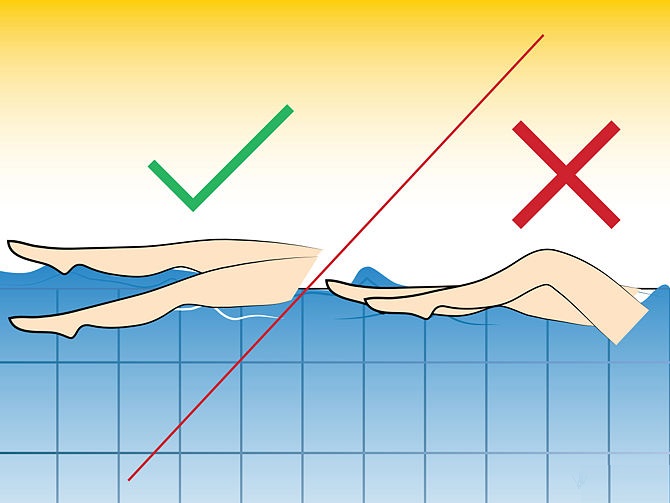
Distinctive features
This technique is the only one in which you do not need to dive underwater, except when the athlete turns over at the side of the pool, but this is absolutely not an obligatory skill for a simple lover of swimming. But this does not mean that breathing can be anything.
It is very important to take into account that a wave in the sea or from a person swimming alongside on the path can wave behind, therefore, since the head lies calmly on the surface of the water, one must inhale very carefully through the mouth, exhale through the nose.

Another distinguishing feature of the rabbit on the back is that the swimmer does not see where the swim is going, which complicates the movement in a limited reservoir. It is for this purpose that the lanes in the pool have stripes of different colors, according to which the athlete determines how many meters are left to the side. Although some are guided by other objects: the door to the locker room, the coach chair, the light bulbs on the ceiling ...
Hand movements
Hand strokes are performed alternately, similarly to a rabbit on the chest, with the only difference being that they are not directed forward, but backwards.

It is very important that the hands lie on the water in a straight line and do not cross. A straight hand comes out of the water with the thumb up, all the fingers are straight. When the hand passes behind the head, it should pass in the proximity of the ear, but do not touch it.
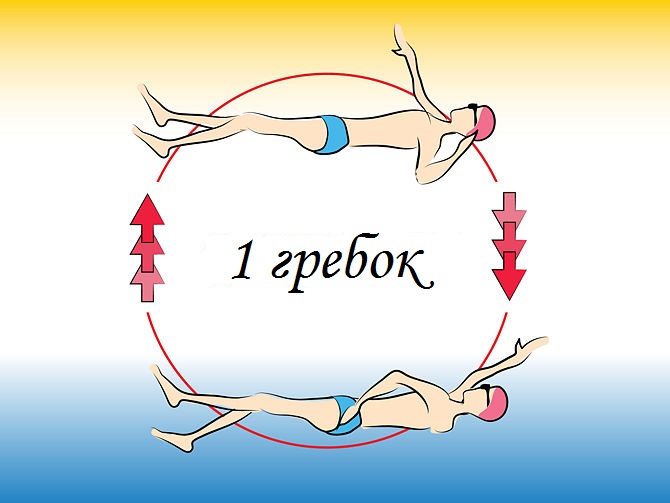
Immersion of the hand into the water is already an edge of the palm, that is, the first to lower the little finger into the water.
When a person is ready to release the plaque, he will still be swimming, holding his hands behind his head. The palms are crossed so that they allow the head to lie on the hands. Without a board, it will become more difficult to hold onto the surface, so you'll have to get used to it. After mastering such an exercise, you can begin to work slowly with your hands. Hands, as before, are straightened behind the head and alternately replace each other in the strokes.
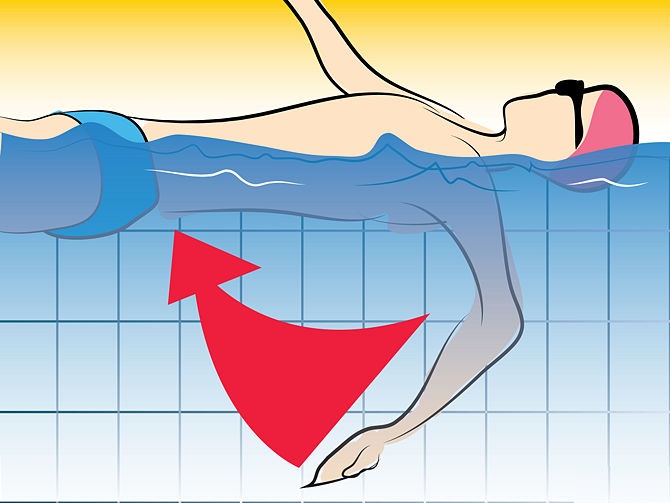
For hands, you can also do exercises on land. It is done standing, and the hands imitate the movements made during the swim. It is important even with such exercises do not forget about the right breathing: breathe in your mouth, breathe out your nose. In addition, the movements should not be too fast, since air is much easier to cut than water.
Exercises in the water
In addition to practicing on land, you can train in the water. You can walk on the bottom and try to coordinate the movements of the hands and feet. And it's also useful to stay on the water, taking the form of a starfish.
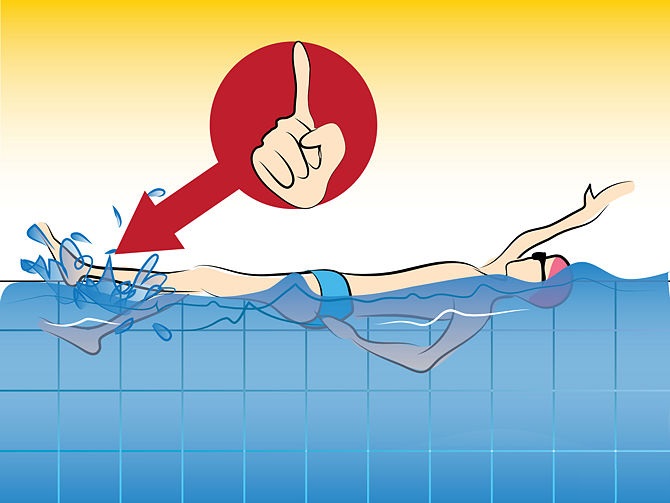
To do this, you need to spread your legs and arms at a slight angle and relax. You just need to lie on the water, looking up, and breathe properly. In the beginning, this exercise can be performed with a delay in breathing.
Swimming on the back is the most specific which is radically different from everyone else. The advantage of swimming on the back is that it allows you to breathe freely. Today we will find out on our backs and find out how useful this exercise is.
Benefit
Swimming on the back, like others, is an excellent cardio exercise. In addition, it is very useful for the spine. And even with the correct execution of the exercise allows you to work out well such muscle groups as the latissimus muscles of the back, hips, shoulders and trapezium. Swimming of the man on the back helps to make the posture more beautiful, and the back is wider. Well, representatives of the weaker sex choose this exercise to tighten the whole body, to become slimmer and more enduring.
The technique of swimming on the back is not particularly difficult, however, after starting its development, be patient and determined, since at first, most likely, nothing will work.
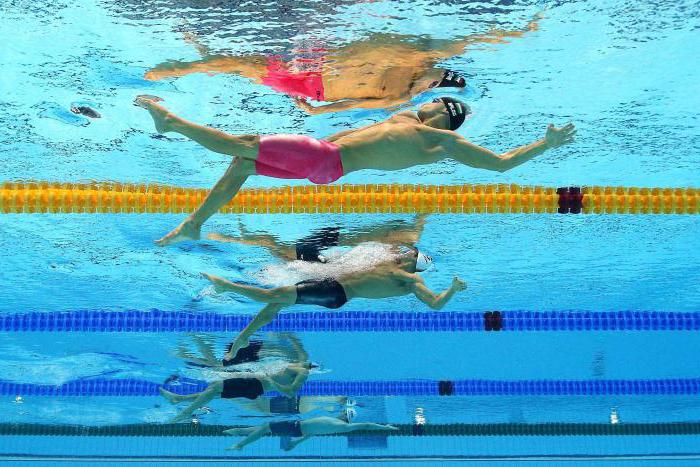
Kinds
Swimming on your back is of two kinds: breaststroke and crawl. However, the breast has no sporting value. It is used either for relaxation after a long swim, or for Krol at the back is more known and common. Many competitions are held on it. Krol is also part of the Olympic Games program. Therefore, today we will pay more attention to this species.
According to the technique of execution, the crotch on the back is very similar to the eponymous style on the chest, only the movements are carried out in a mirror image.
Body position
First you need to take a horizontal position on the back and fully extend the body. The chin needs to be pulled up to the chest, and the eyes are fixed on the toes. The back should be slightly bent in the thoracic area, and lift the chest (just try to reduce the scapula). When the arms are extended beyond the head, the water level should be at the level of the ear shells. This is the starting point.
If you can not keep the collections pressed against your chest, try the following exercise. Between the chin and the chest squeeze the tennis ball. Try not to drop it. Controlling the ball, you will learn to follow your chin and keep it pressed to your chest for a long time. Having mastered the exercise on land, try it on the water. Soon you can and completely abandon the ball.
Movement of hands
The cycle of movement of hands during the implementation of this technique of swimming is divided into three phases: "capture", "pull-up" and "return". So, let's start with the "capture". The outstretched hand is submerged in water by the palm of itself, that is, the first to enter the water is the little finger. In this phase, the hand grasps the volume of water, which in the future will have to be pushed out. It's time to do "pull-up". For this, the hand moves under the water towards the thigh, pushing out the water. In the final stage of "pull-up" the hand passes near the hip and comes out of the water with the little finger up. Here the "return" begins, during which the hand simply returns to the position for "capture".
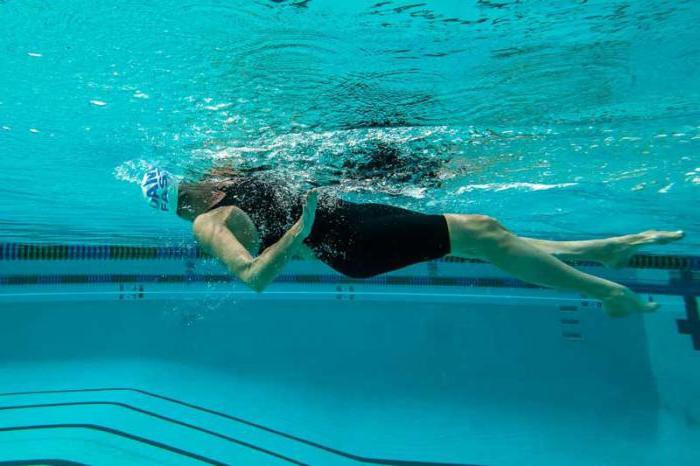
When the first hand is under water, in the middle of the "pull-up", the second performs a return. The hands must always be in opposite phases. Between them there should always be a half-turn.
Movement of legs
Legs in swimming on the back move in the same way as in the free style, - counter strokes up and down. During movement, the distance between the legs should be 15-30 centimeters. One cycle (a full circle with one hand) includes three hits with each foot, that is, six strokes in total. Movement is mainly due to the muscles of the thigh. Knees should be relaxed, and socks slightly stretched. The movement must be biting. With the proper work of the feet, they create a small fountain on the surface of the water. In this case, only the feet can slightly look out, and the knees should always be under water. As in freestyle, the body receives the main impulse through the work of the hands, not the legs.
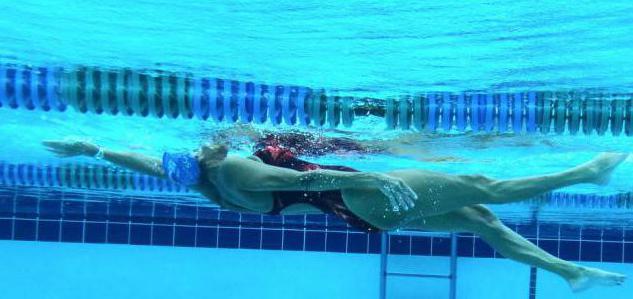
Swimming on the back: nuances
Looking at the athletes sailing on their backs, one might think that their hands are always in a straight position, but this is not so. A straight hand that cuts water will not give anything. To quickly swim on your back, you need to learn how to do the so-called S-shaped bend of the hands. Let's analyze step by step what he is.
After the "capture" the hand must push the water to the feet. For this, the arm bends at the elbow in the direction of the waist. Imagine that you need to push the ball to your feet. This is how the movement of the hand under the water should look like. After the push, the hand again aligns and turns so that the little finger comes out first from the water.
In addition, during the "pull-up" the body rotates around its axis in the direction of the working arm. All these simple tricks allow you to achieve maximum speed.
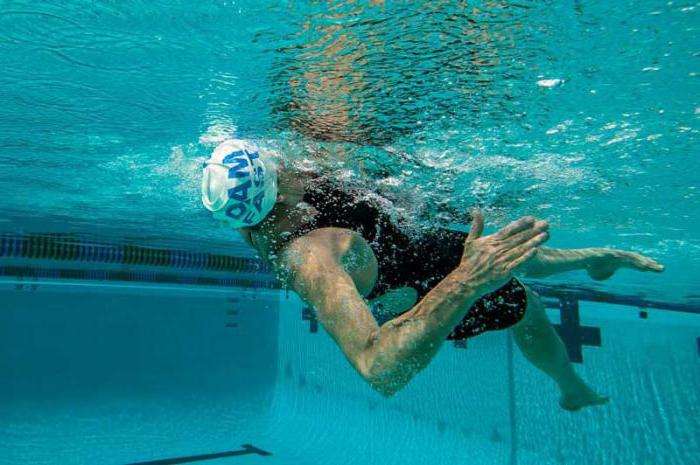
Training
To work out the right technique, first learn how to work with your feet. When the kicks are brought to automatic, you can safely swim without hands. This will allow you to train your hands without thinking of having to stay on the water.
To learn how to work with the body, you will also need to swim on your back without hands. The arms are stretched along the trunk. The body turns alternately from side to side with a periodicity of three hits by the feet. At the end of the turn, the shoulder should look slightly out of the water. Do not forget that the head should always be face up.
Common Errors
We will analyze the most common mistakes in the development of swimming on the back and the ways to solve them.
- The body does not slip on the surface of the water, but it seems to stretch. The reason is simple: the legs are bent in the hip joint, which causes the pelvis to fall down. To solve this problem, you just need to monitor the elongated, streamlined position of the body.
- The shuffling of the legs does not hold the body on the water without hands. First you need to check the correctness of movements. If everything is in order with the technique, then the reason is the clenching of the ankle joints and the wrong position of the feet. Try to turn the stops inside (make them "club-footed"). If this did not help, try using flippers until you learn how to work with your hands.
- During the "return" of the hands they splash their face. The reason lies, most likely, in the bend of the hands. Carrying a hand over your head, you need to keep it straight, and do not forget that the little finger goes first.
- Slipping on the water is slow. If you are faced with this problem, then your body along with your shoulders is always in the same position - horizontal. Add to the rotation of the casing rotation, and your swimming on the back will be correct.

Technique of brasse on the back
Although this style does not have such a reputation as a crook, for general development it does not hurt to get acquainted with his technique. Moreover, it does not differ much from the technique of the rabbit. The starting position is absolutely the same as it was said above. The technique of hand movement is also completely identical. The only difference is that the hands do not alternate, but work simultaneously. Well, the second difference, most importantly - legs are pushed, not punched.
The push is made at a time when the hands are in a passive phase, that is, sweep over the body. When preparing for a push, the hips form with the body an angle of 160-170 degrees, and the drumstick with the thigh is the angle close to the straight. The feet turn inwards, as in the rabbit. During the push, the whole body aligns in one line and slides on the water until the hands make a stroke.
Swimming on the back: Olympics
As already mentioned, the crawl on the back is included in the program of the Summer Olympic Games. For him in the Olympic program allocated 4 numbers: 100- and 200-meter swim for women and men. In addition, this style of swimming is used in the relay 4 x 100 at the first stage and in complex navigation in the second stage (distance 200 and 400 meters).
So if you want to see how real professionals swim, watch the video from the Olympics. Now that you know the theoretical side of this style, watching competitions will be much more interesting, even if our swimmers do not take part in them. And they, by the way, showed at the last Olympics any results in the discipline "swimming on the back." Rio de Janeiro helped reveal many talents.
Russian took third place in the final 200-meter swim on his back. And his compatriot Daria Ustinova - the fourth. Ukrainian swimmer Daria Zevina, unfortunately, was able to win only the fourth place in the semifinal swim by 200 meters.
Conclusion
Today we found out what a swim is on the back. Women and men perform this exercise the same way, so there is no need to consider the technique separately. This style is presented in competitions only one species, nevertheless it is very useful and interesting.


